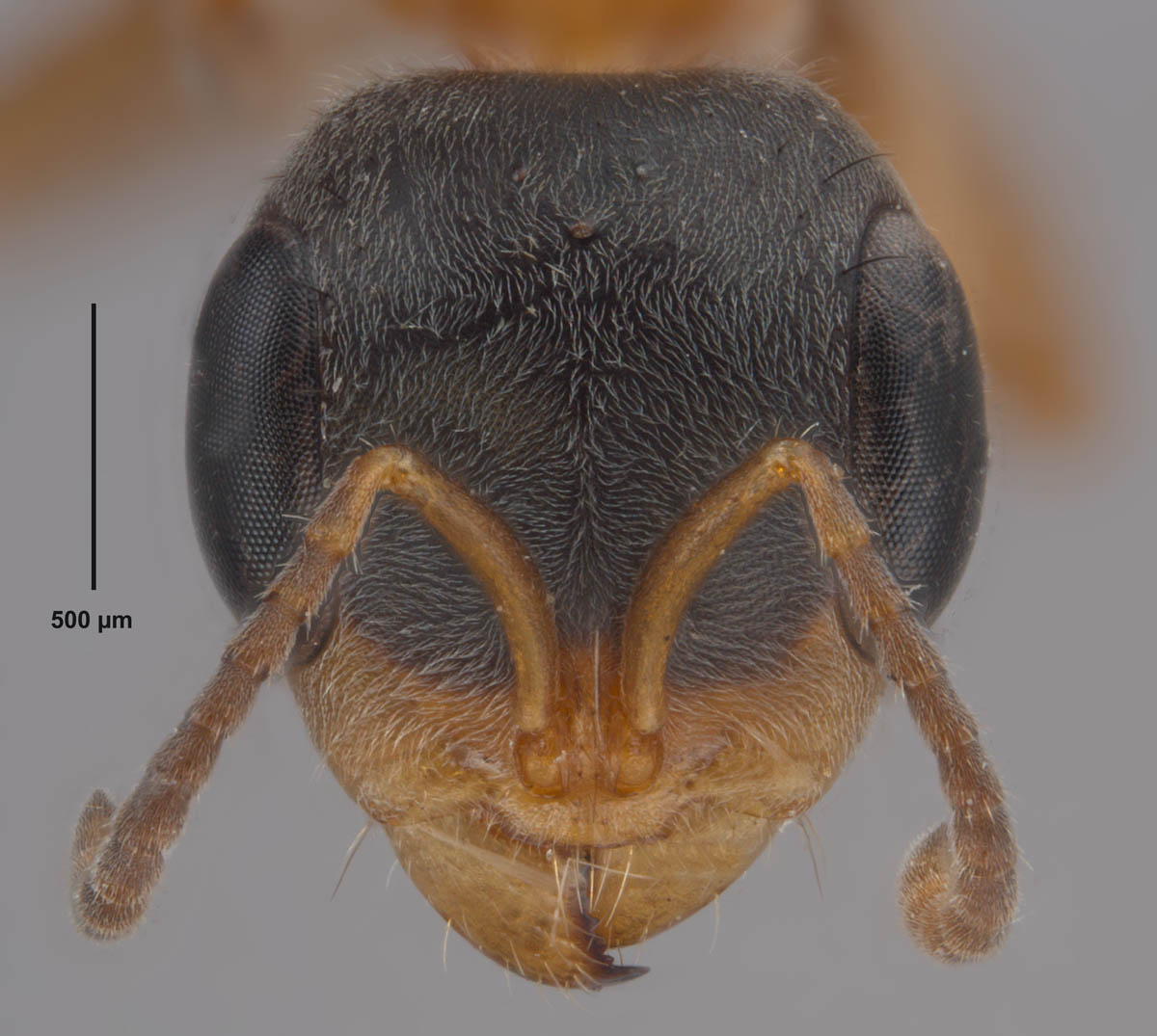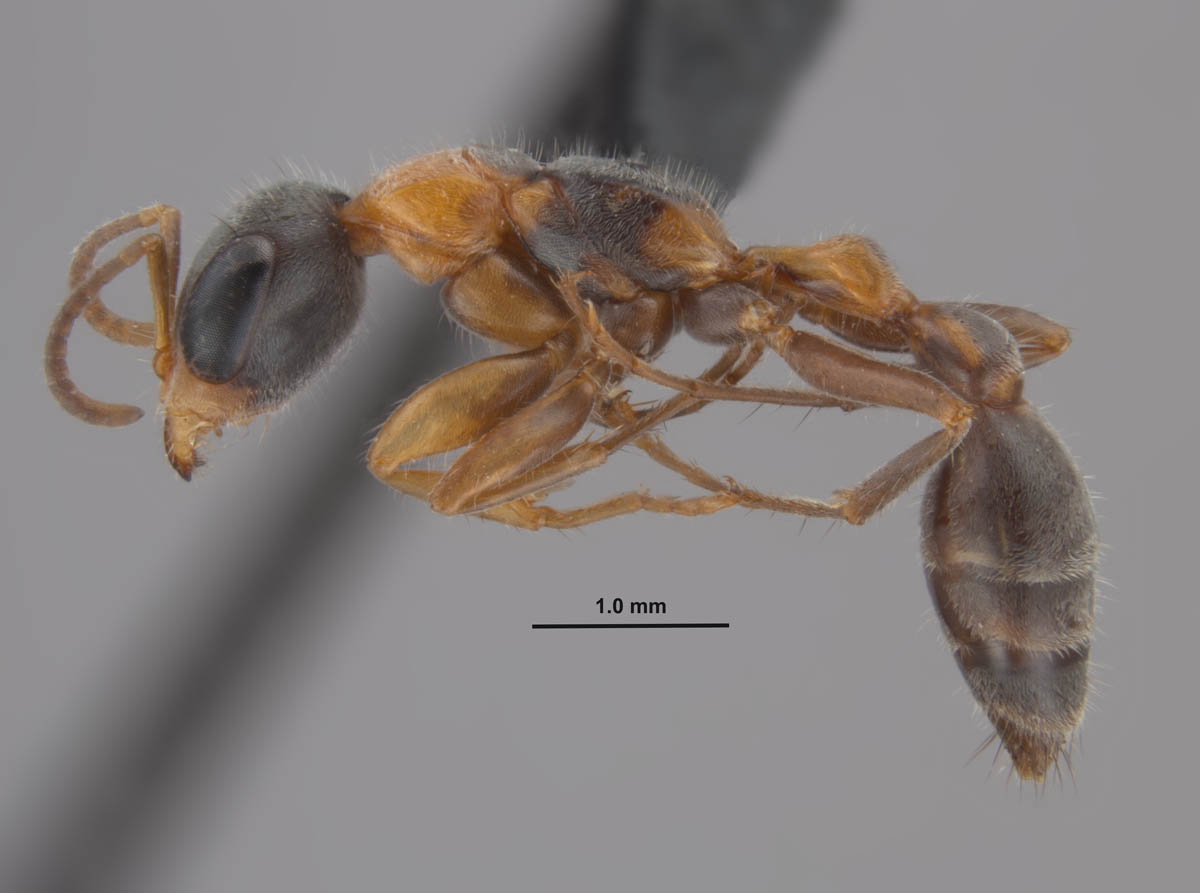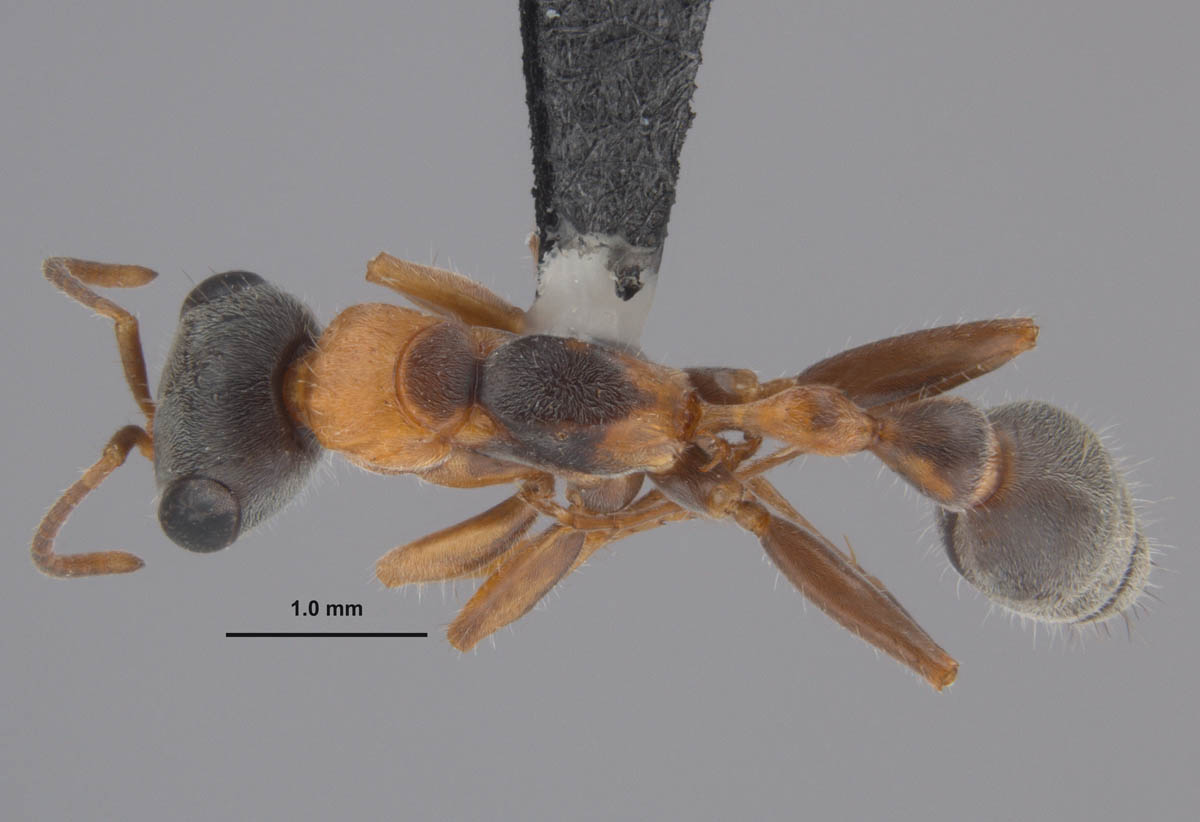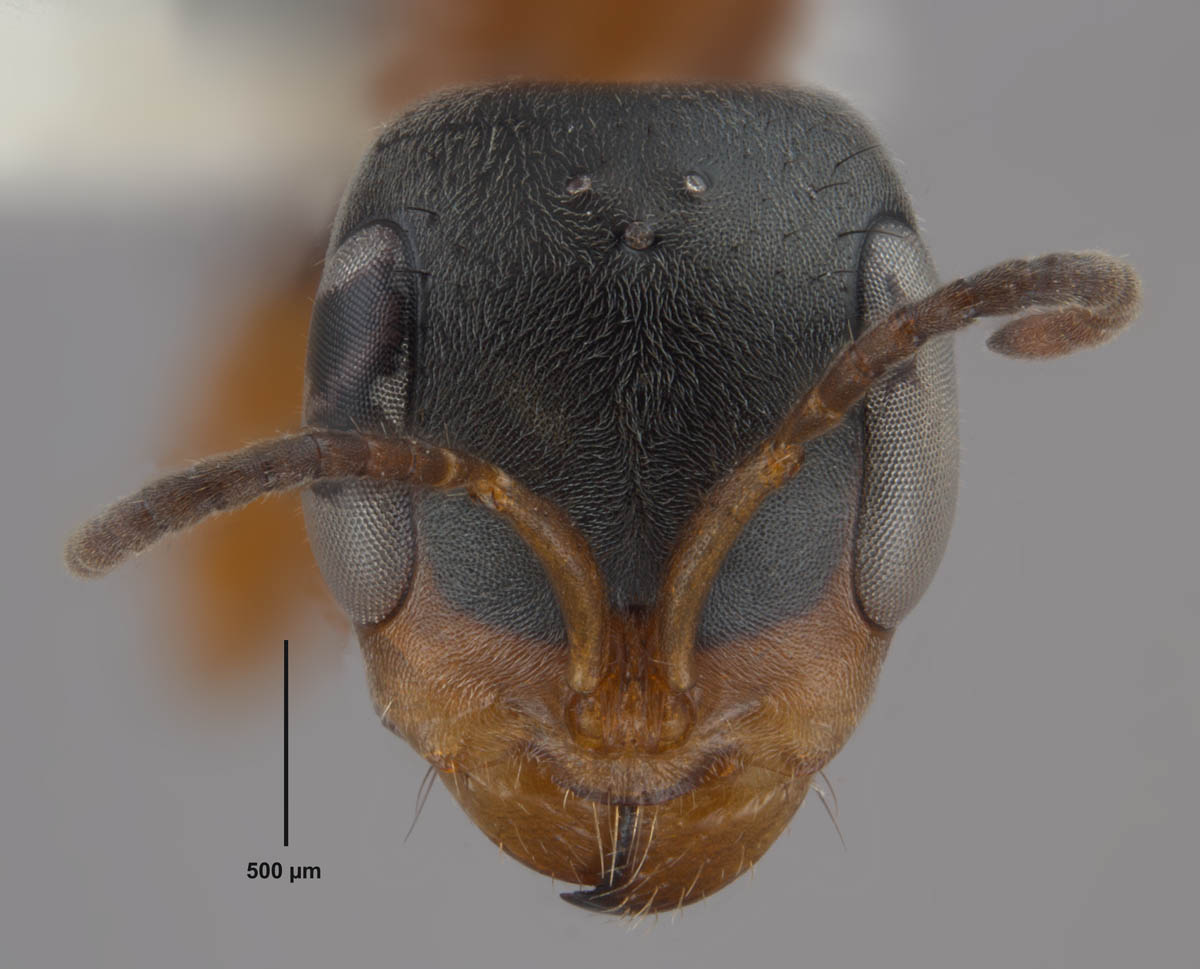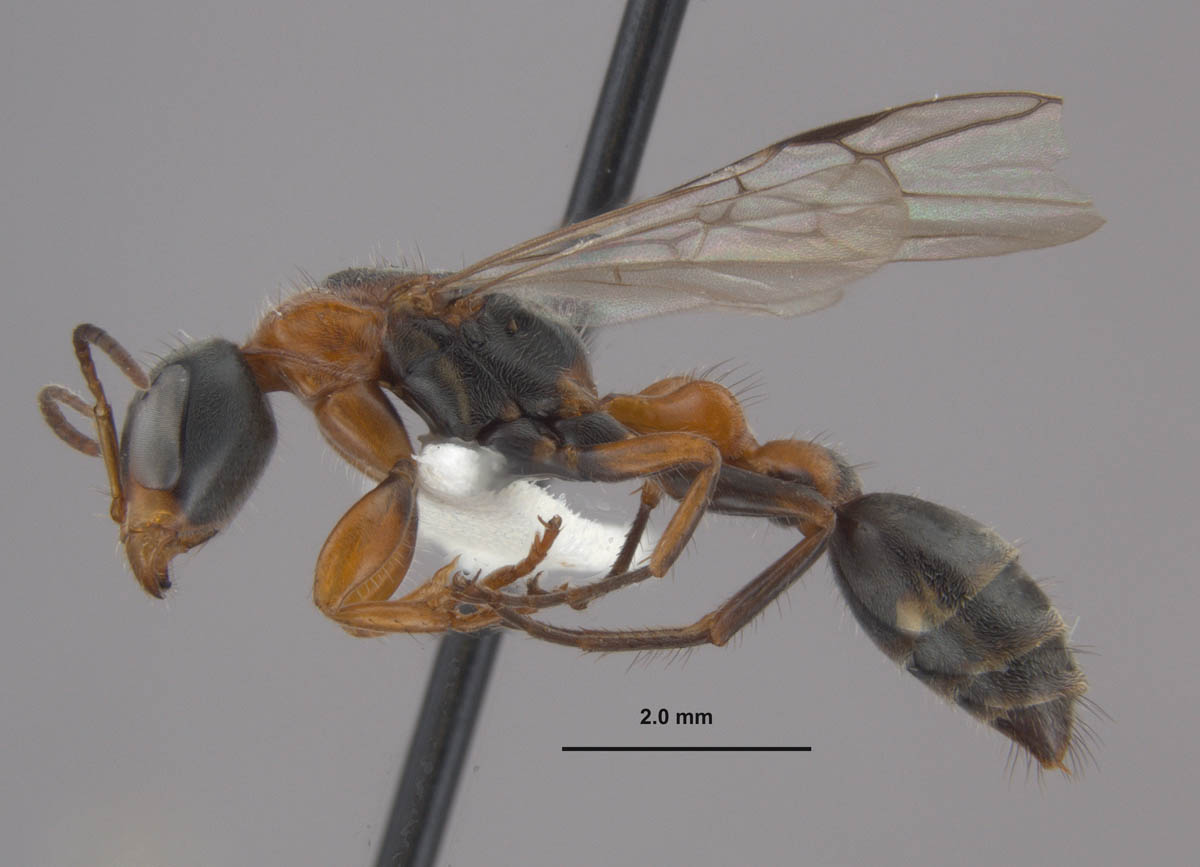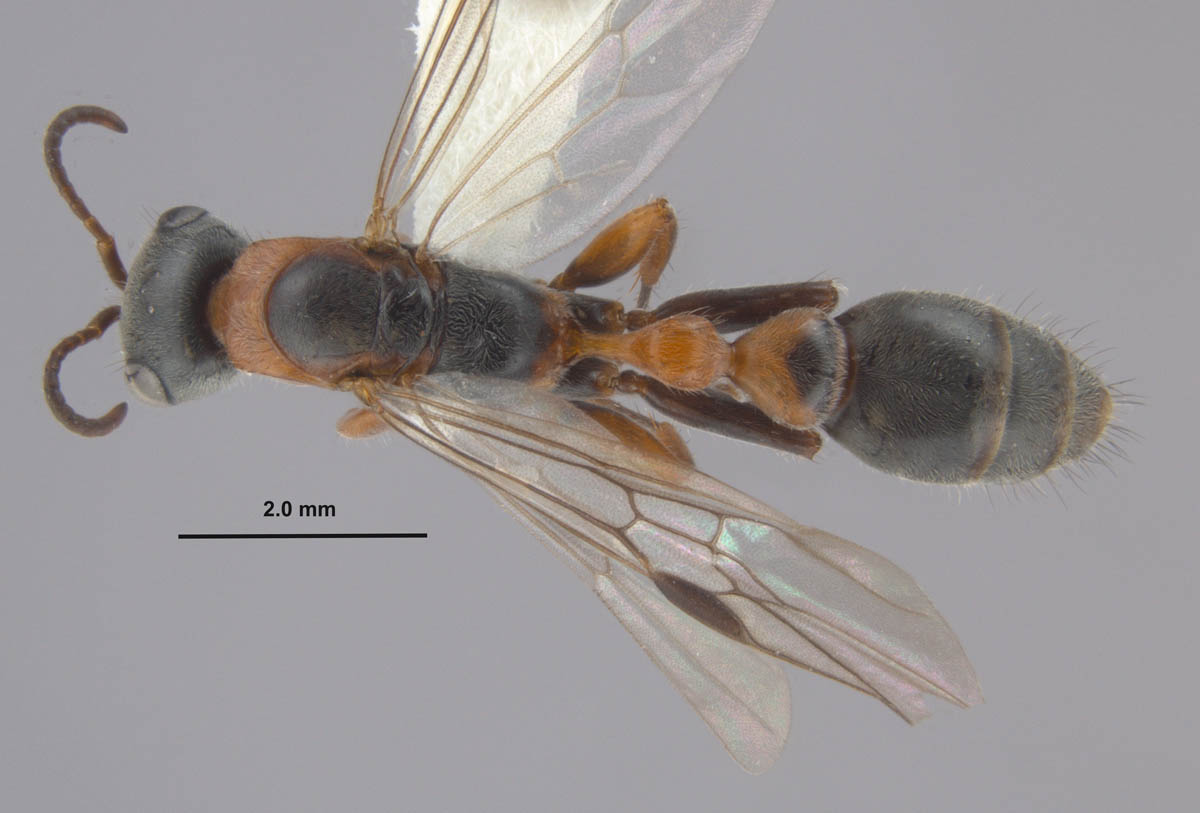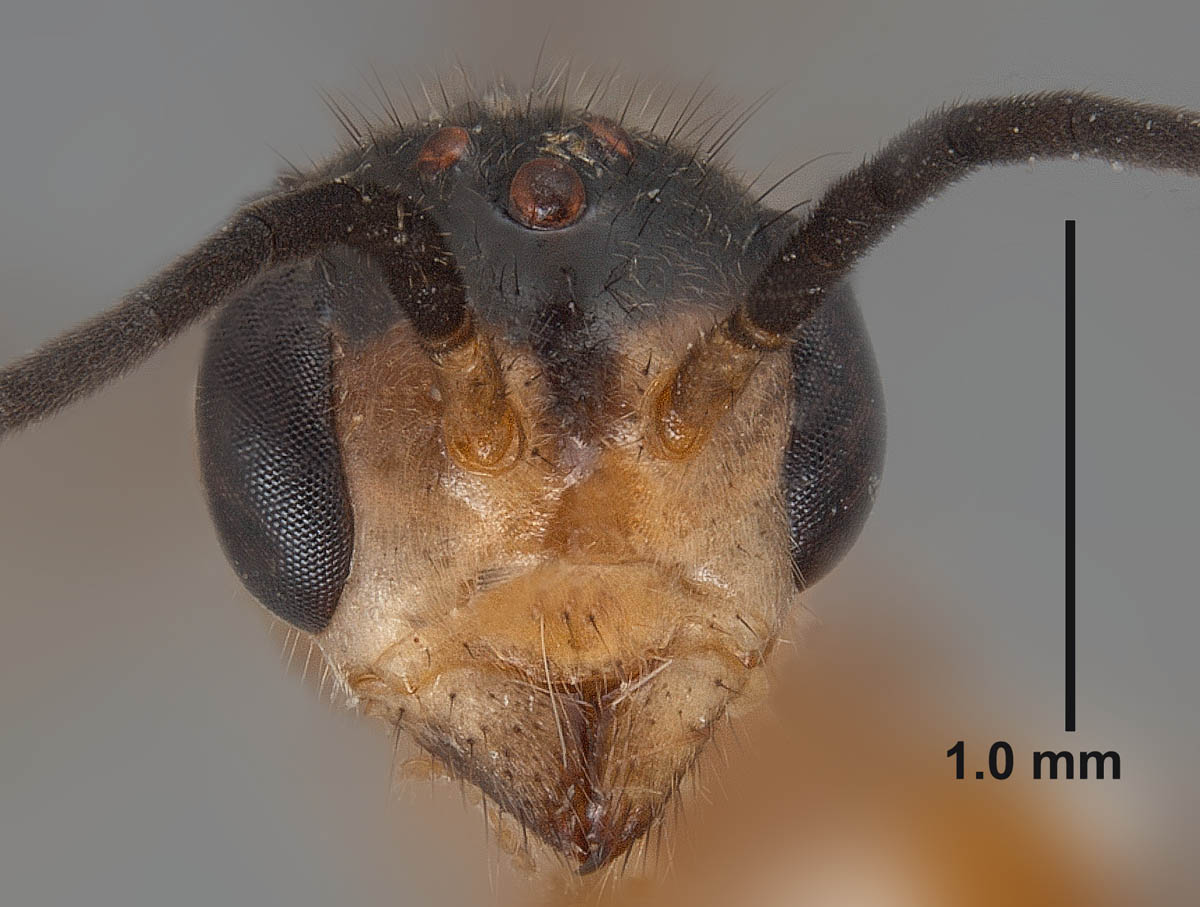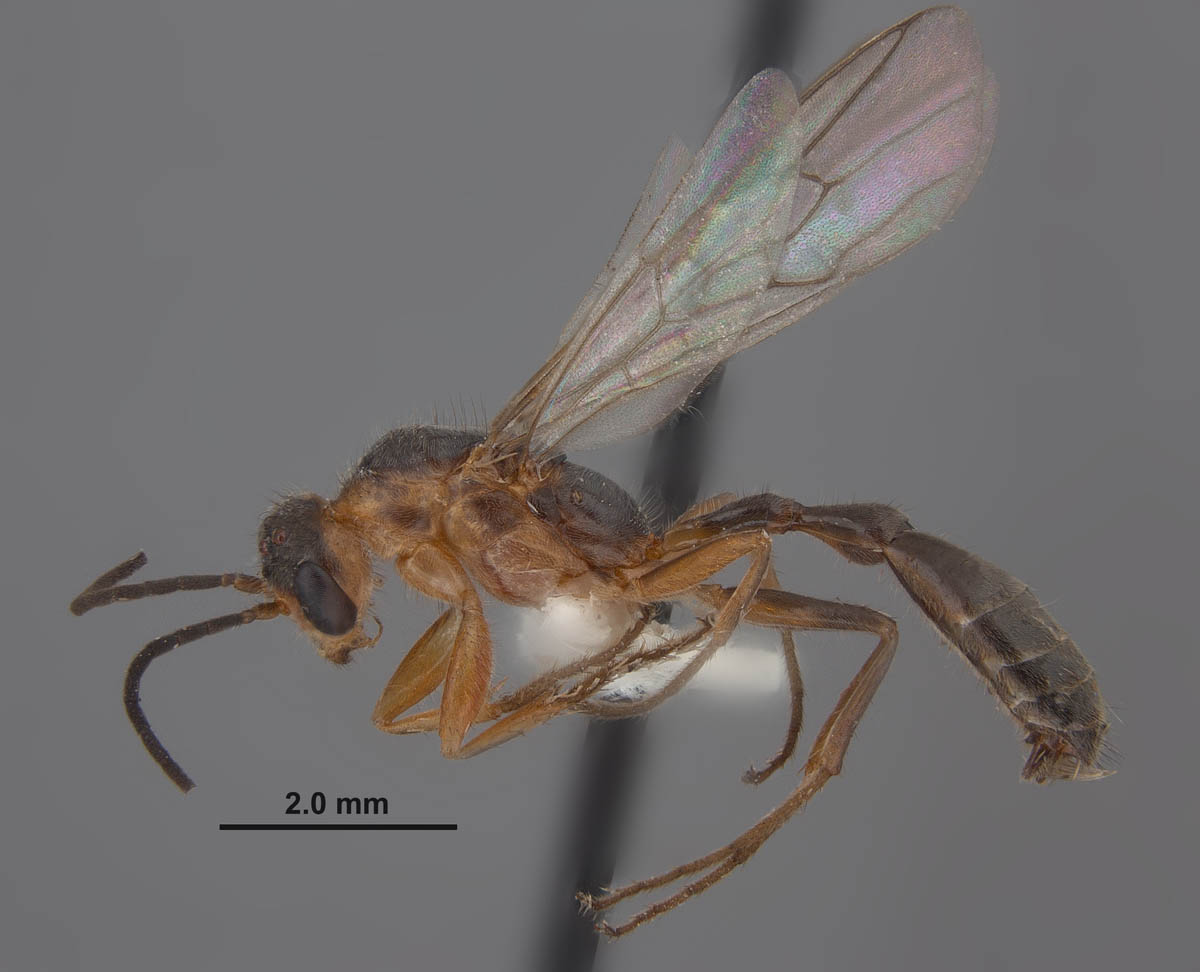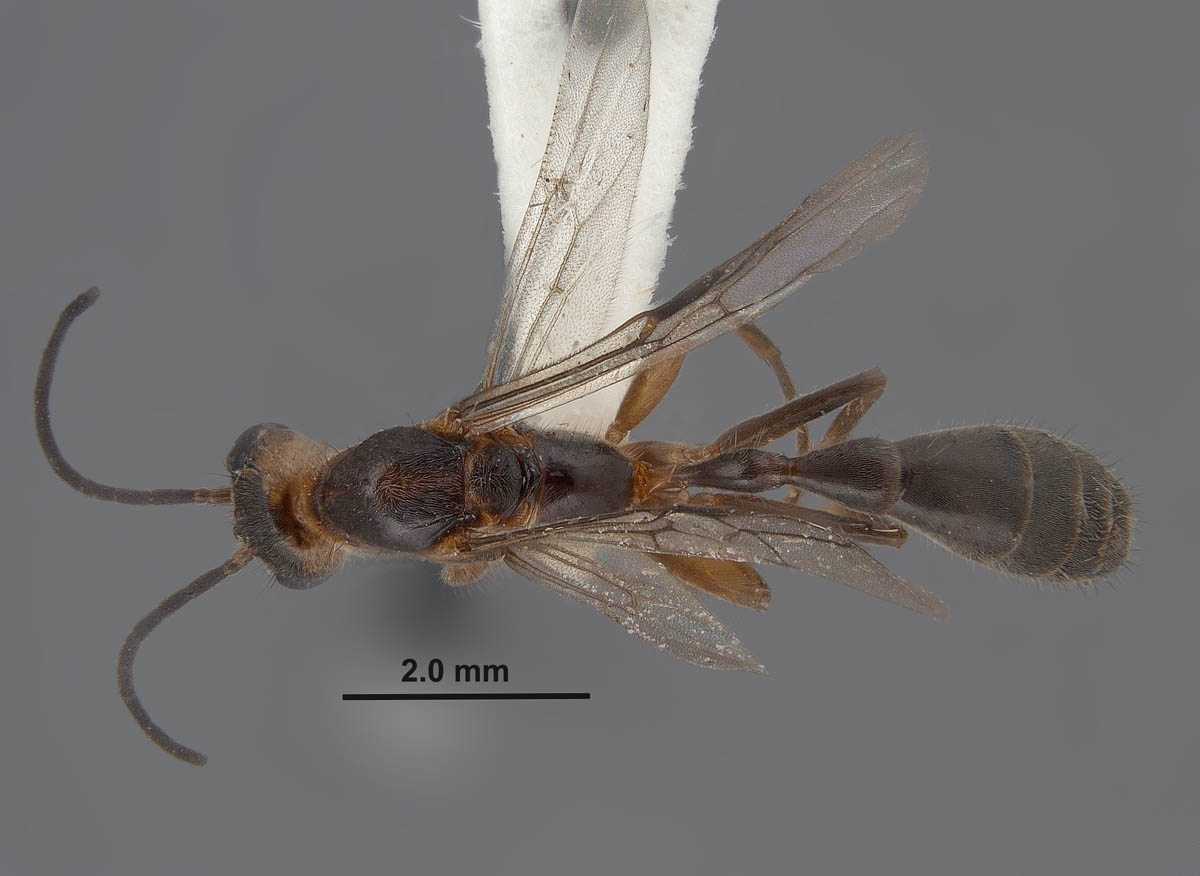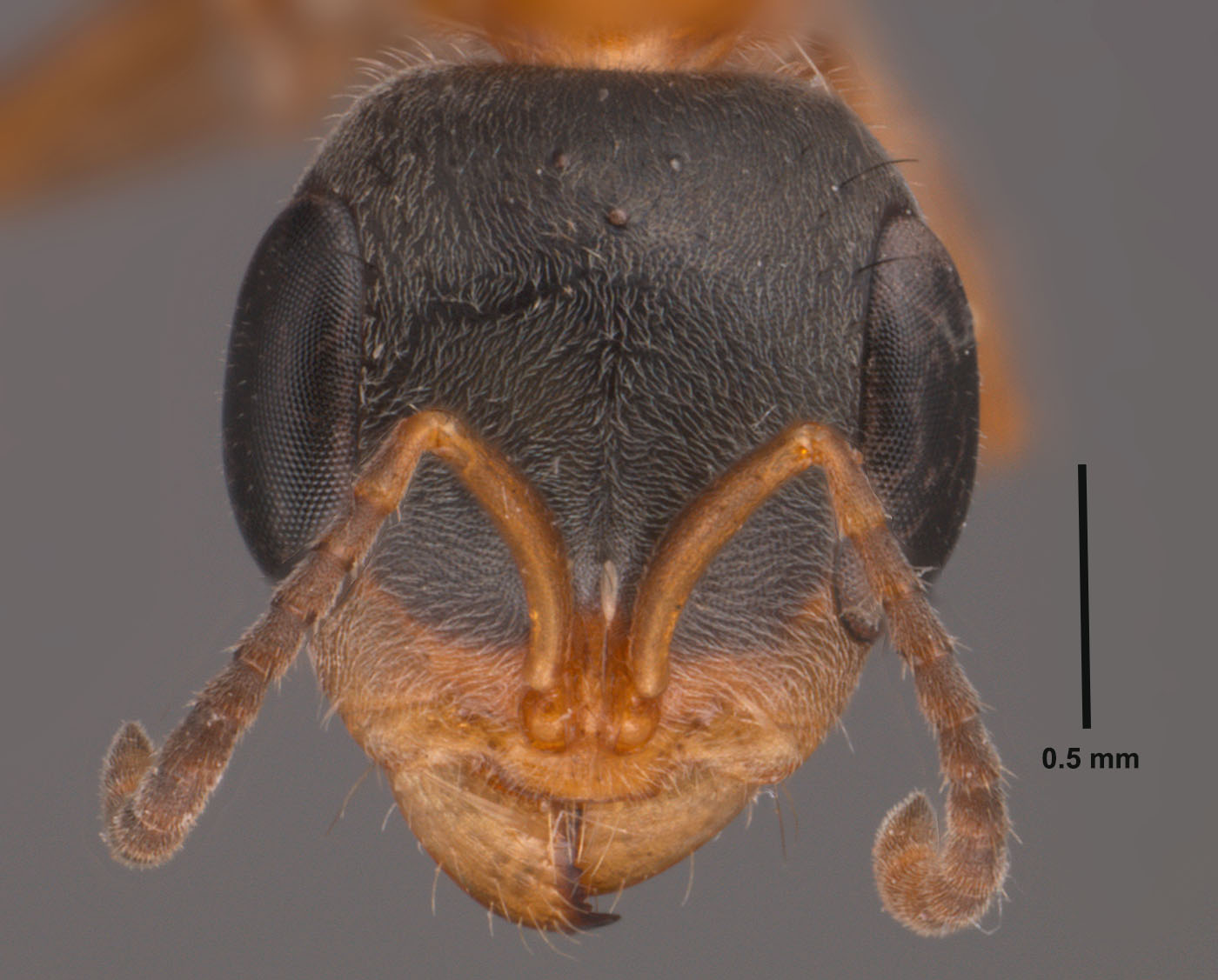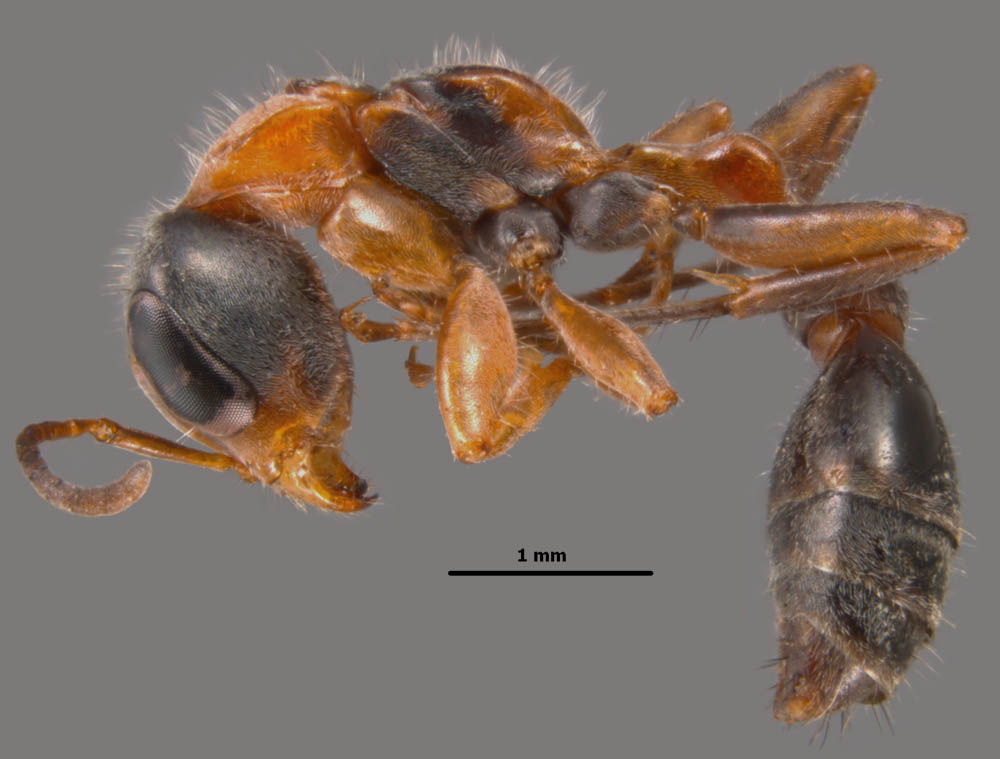Subfamily PSEUDOMYRMECINAE Author: Joe A. Macgown |
||
Pseudomyrmex gracilis, full face view of worker (FL, Sarasoto Co.) (photo by James Lewis and Joe MacGown) |
Pseudomyrmex gracilis, lateral view of worker (FL, Sarasoto Co.) (photo by James Lewis and Joe MacGown) |
Pseudomyrmex gracilis, dorsal view of worker (FL, Sarasoto Co.) (photo by James Lewis and Joe MacGown) |
Pseudomyrmex gracilis, full face view of queen (LA, Iberia Par.) (photo by James Lewis and Joe MacGown) |
Pseudomyrmex gracilis, lateral view of queen (LA, Iberia Par.) (photo by James Lewis and Joe MacGown) |
Pseudomyrmex gracilis, dorsal view of queen (LA, Iberia Par. (photo by James Lewis and Joe MacGown) |
Pseudomyrmex gracilis, full face view of male (LA, Iberia Par.) (photo by Ryan Whitehouse and Joe MacGown |
Pseudomyrmex gracilis, lateral view of male (LA, Iberia Par.) (photo by Ryan Whitehouse and Joe MacGown |
Pseudomyrmex gracilis, dorsal view of male (LA, Iberia Par.) (photo by Ryan Whitehouse and Joe MacGown |
Introduction This genus is distinctive and can easily be distinguished from other US genera by the following characteristics: body elongate with postpetiole; eyes extremely large, more than 1.5 times as long as wide; antennal scapes short; 12-segmented antenna; relatively short mandibles with 7-10 teeth; sting present. Pseudomyrmex gracilis (Fabricius) (Pseudomyrmicinae), the graceful twig ant, is a large orange and black species thought to be native to Mexico. This species is known from Argentina and Brazil through Texas, parts of southeastern US, and the Caribbean. Its status as an invasive species in the US is unclear, but due to its apparent spread in the southeastern US and its painful sting, this species is worth monitoring Taxonomic History (provided by Barry Bolton, 2013) Diagnosis Identification Queen: Large, larger than worker (HL 1.77–1.92 mm, HW 1.58–1.74 mm, SL 0.75–0.82 mm, EL 1.05–1.10 mm, MeSL 2.52–3.04 mm) (n=5) (MEM specimens). Conclorous black to bicolored orange and black, with head (except clypeus), mesosoma (except pronotum and posterior portion of propodeum), mid and hind coxae, parts of the postpetiole, and gaster black with the remaider of the body orangish brown (mid and hind legs often with infuscation). Head rounded rectangular, slightly longer than wide compared to the worker; integument matte with fine punctation; covered with dense, silvery setae and some darker, erect setae; eyes elongate, large, located laterally along the midline of the head; three small ocelli present; a slight medial depression running from the antennal insertion point to the middle ocelli often present; frontal carinae and antennal insertion points set closely together; antennae 12-segmented, lacking club, scape slightly curved outward; clypeus somewhat reduced, anterior margin rounded; mandibles curved triangular, with two apical teeth followed by minute dentition. Mesosoma elongate, thicker than worker; pronotum shiny, remaider of mesosoma slighty matte; with numerous appressed and erect setae; pronotal band visible dorsally; mesonotum flat dorsally; propodeal declivity broadly rounded, propodeal spines lacking. Wings mostly transparent, venation brown; forewing with dark brown pterostigma and closed costal, basal, subbasal, discal, two submarginal, and marginal cells; hindwing with closed costal, basal, and subbasal cells. Waist elongate, two-segmented; both nodes with elongate, erect setae and numerous fine, appressed setae; petiole pedunculate, node somewhat spherical in lateral view, ovate dorsally, with a tubercle-like spiracle present anterolaterally; postpetiole ovate laterally, rounded triangular dorsally, widest posteriorly, much wider than petiole. Gaster matte, with numerous aprressed, whitish setae and longer, dark erect setae (especially apically); well developed sting present. Male: Large (HL 1.32–1.38 mm, HW 1.42–1.60 mm, SL 0.23–0.25 mm, EL 0.80-0.90 mm, MeSL 2.56-2.72 mm) (n=5) (MEM specimens). Bicolored brown and orangish to brown and pale-yellow with the dorsum of the mesosoma, gaster, apex of head, and antennae brown. Head almost circular in shape a mixture of erect and fine, appressed setae; eyes well developed and situated laterally at the midpoint of the head; three distinct ocelli present; mandibles with one apical tooth followed by minute dentition; 12-segmented antennae with a short scape; minute tubercle located between the antennal insertion points. Mesosoma densely covered with slivery-white, erect and appressed setae; four wings present. Waist elongate, thin and two segmented; nodes very low, almost continuous with the gaster. Gaster narrow and elongate with appressed and erect setae. Biology Pest Status Distribution Native Range: Tropics and subtropics of the Neotropics (Wetterer 2010). Australian: Hawaii (antwiki.org). U.S. Distribution: AL, CA, FL, GA, HI, LA, MS, SC, TX (MEM records; Wetterer 2010; Doug Booher, Pers. Comm; antweb.org). Acknowledgments Literature Cited Erichson, W. F. 1839. Bericht über die Leistungen im Gebiete der Naturgeschichte während des Jahres 1838. IX. Insecten. Archiv für Naturgeschichte 5(2): 281-375. Enzmann, E. V. 1944. Systematic notes on the genus Pseudomyrma. Psyche (Cambridge) 51: 59-103. Fabricius, J. C. 1804. Systema Piezatorum secundum ordines, genera, species, adjectis synonymis, locis, observationibus, descriptionibus. Brunswick: C. Reichard, xiv + 15-439 + 30 pp. Kempf, W. W. 1961. Estudos sôbre Pseudomyrmex. III. (Hymenoptera: Formicidae). Studia Entomologica 4: 369-408. Klotz, J. H., J. R. Mangold, K. M. Vail, L. R. Davis Jr., and R. S. Patterson. A survey of the urban pests (Hymenoptera: Formicidae) of Penisular Florida. Florida Entomologist 78: 109–118. Kusnezov, N. 1953. La fauna mirmecológica de Bolivia. Folia Universitaria. Cochabamba 6: 211-229. Roger, J. 1862c Synonymische Bemerkungen. 1. Ueber Formiciden. Berliner Entomologische Zeitschrift 6: 283-297. Ward, P. S. 1989. Systematic studies on pseudomyrmecine ants: revision of the Pseudomyrmex oculatus and P. subtilissimus species groups, with taxonomic comments on other species. Quaestiones Entomologicae 25: 393-468. Ward, P. S. 1993. Systematic studies on Pseudomyrmex acacia-ants (Hymenoptera: Formicidae: Pseudomyrmecinae). Journal of Hymenoptera Research 2: 117-168. Wetterer, J.K., and A.L. Wetterer. 2003. Ants (Hymenoptera: Formicidae) on non-native Neotropical ant-acacias (Fables: Fabaceae) in Florida. Florida Entomologist 86: 460-463. Wetterer, J. K. 2010. Worldwide spread of the graceful twig ant, Pseudomyrmex gracilis (Hymenoptera: Formicidae). Florida Entomologist 93: 535-540. Wheeler, W.M. 1942. Studies of Neotropical ant-plants and their ants. Bulletin of the Museum of Comparative Zoology 90: 1-262. Wheeler, G.C., J. Wheeler. 1956. The ant larvae of the subfamily Pseudomyrmicinae (Hymenoptera: Formicidae). Annals od the Entomological society of America 49: 374-398. Wild, A. L. 2007. A catalogue of the ants of Paraguay (Hymenoptera: Formicidae). Zootaxa 1622: 1-55. Links |
||


